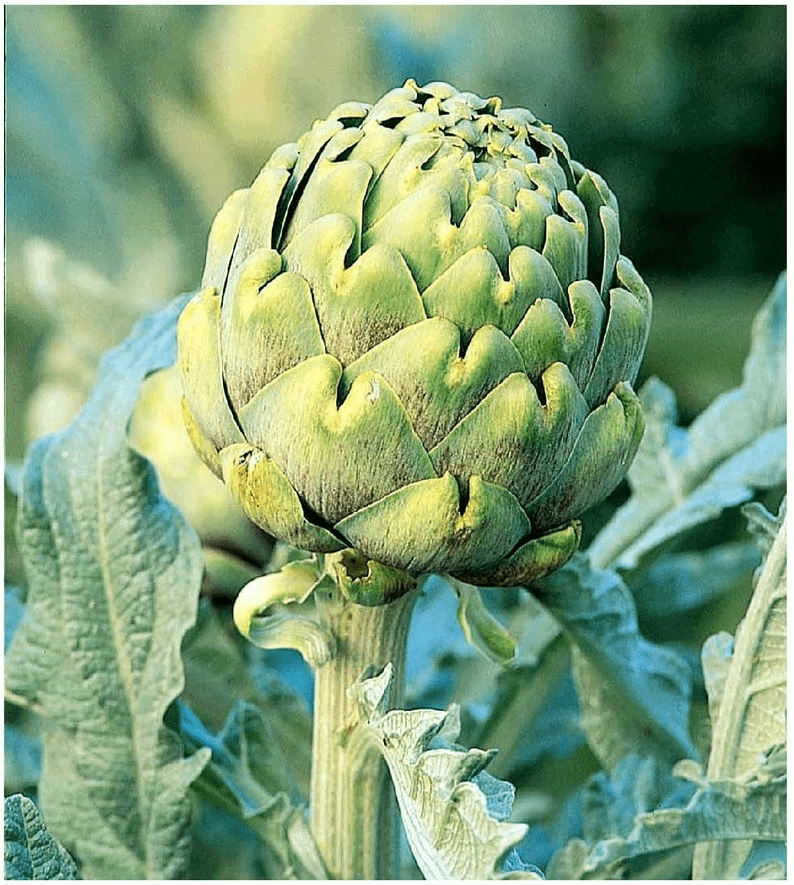Artichoke plant – Enjoyed since Roman times, artichokes are herbaceous perennial plants that belong to the thistle family. Their flower buds are edible and harvested before they flower. Artichokes are an attractive landscape plant and a nutrient-rich vegetable.
These plants can grow up to 3 feet in height and width. The edible part is the flower bud before it blooms. When allowed to bloom, the flowers can grow to 7 inches in diameter.
With the right conditions, you can quickly grow artichokes in your home garden. You can also plant and reap a second crop in late summer. We’ll explain how to go about planting artichokes.
Artichoke Plant
An artichoke plant can be grown in most US growing zones, yielding harvests for up to five years. They do best when grown in climates with mild winters and cool, humid summers. You should treat artichokes like annual vegetables in cold zones and perennial vegetables in warm zones.
One artichoke plant produces several artichokes, with the biggest buds growing at the top of the plant and smaller buds growing at the bottom.
Artichokes have lovely pollinator-friendly flowers making them worth growing even if you don’t plan to eat them. Popular artichoke varieties include: Globe, Imperial Star, Big Heart, Violetta, Castel.
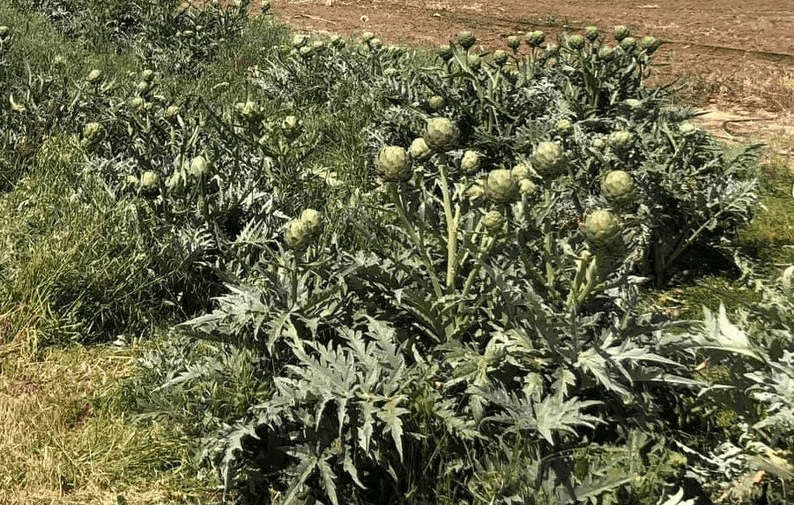
How to Grow Artichokes
Here’s our step-by-step guide for growing artichokes.
Choose the Best Location
Artichoke plants a minimum of six hours of sunlight each day and good drainage to thrive. Excessive moisture will damage the artichoke’s root system and crown. Thus, gardeners should avoid growing artichokes in damp soil.
Artichokes need to obtain nitrogen from the soil to flourish. Sunflowers, peas, tarragon, and cabbage make great companions for artichokes in a vegetable garden because they won’t compete for nutrients.
Get the Soil Ready
Although you can grow an artichoke plant in most soils, to maximize your artichoke harvest, grow them in soil rich in nutrients with abundant organic matter.
An easy way to determine your soil’s texture is by grabbing a handful, squeezing it, then opening your hand. You know your soil is appropriately mixed when it doesn’t clump together or fall apart but instead crumbles in your hand.
Next, you’ll prepare the artichoke bed by digging a row at least 8-inches deep and working in 5-inches of compost.
The size of your garden will determine how much manure you’ll need. A good rule of thumb is mixing 100 pounds of manure for every 100 square feet of garden space.
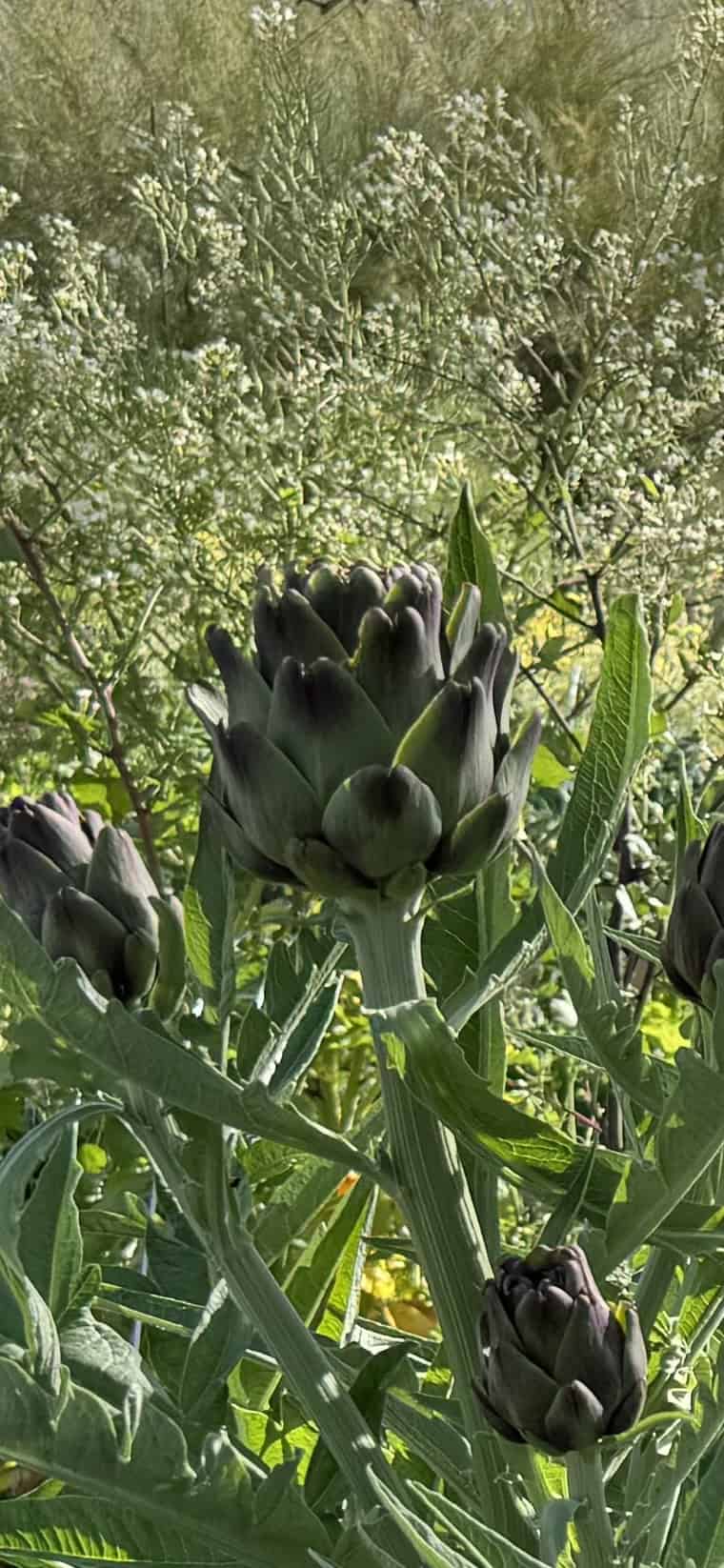
Regularly Water Artichokes
Water the artichokes immediately after planting and between one to three times a week after that. They are water-loving thistles.
Artichokes need deep watering because the plant lies in its deep roots. Hot summer temperatures may cause artichokes to flower quickly. To avoid premature flowering, use overhead irrigation to lower the temperatures. Mulch also helps lower soil temperatures.
Fertilize Artichokes
Fertilizing your artichokes will ensure they have the essential nutrients they need to grow from the time you plant them. To ensure healthy artichokes with high yields, use a balanced vegetable plant food every other week throughout the growing season.
Every other week throughout the growing season, use a balanced vegetable plant food to ensure healthy artichokes with high yields.
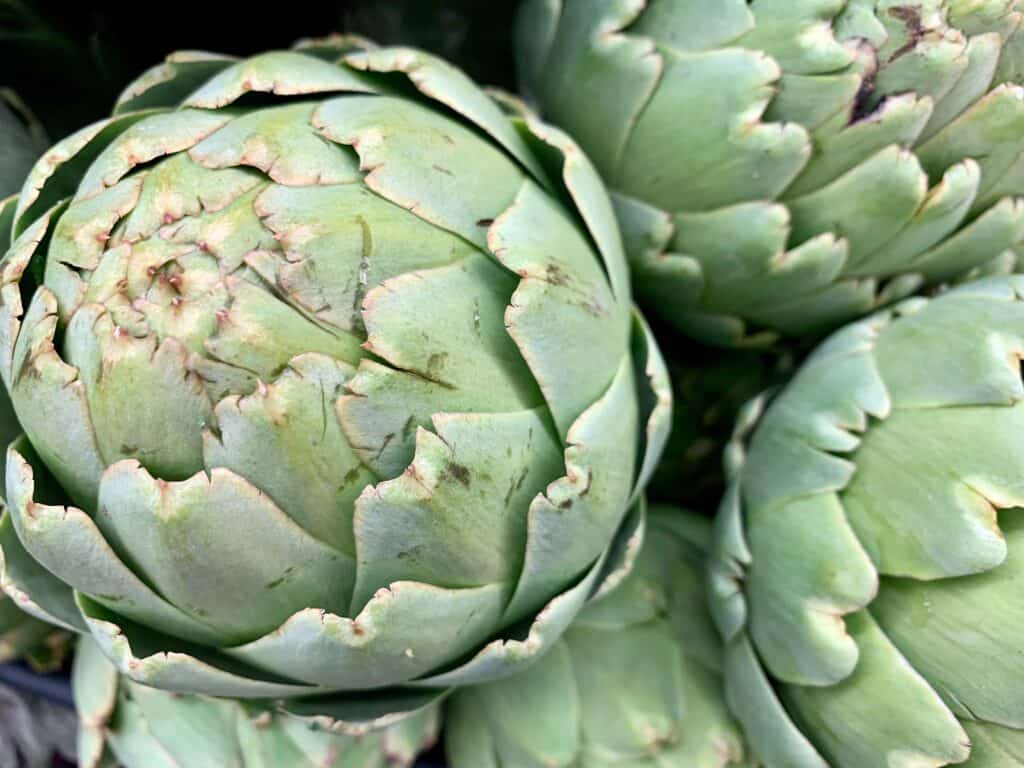
Harvesting Artichokes
The largest growing and fastest maturing part of the artichoke is its center bud. When harvesting artichokes, use a utility knife or other sharp knife to cut the stem about 1 to 3 inches from the bud’s base. Use the stem as a handle when trimming the artichoke.
Artichoke plants produce shoots with tiny buds from 1 to 3 inches in diameter. The side shoot’s edible buds are very flavorful and tender.
Dividing Mature Artichokes
Artichoke plants generally grow for five years. The offshoots produced by the parent plant tend to crowd them over time. You must carefully divide artichoke plants once every few years to keep your artichoke garden healthy.
There’s no need to uproot the entire plant. All you need to do is use a garden knife to separate a rooted shoot and dig it up carefully using a spade.
Growing in Different Zones and Climates
Climate plays an important role in determining how to grow an artichoke plant.
Artichokes do not grow well in USDA hardiness zones 1 – 2 because it’s too cold. They don’t typically grow well in hardiness zones 12 – 13 because their summers and winters aren’t cool enough.
Hardiness Zones 3 – 6
- You can grow artichokes as annuals.
- In colder climates, it’s best to start new plants each year.
Hardiness Zones 7 – 11
- You can grow artichokes as perennials.
- You will typically be able to harvest them in the spring and again in the fall.
- They’ll grow for several years.
- In warmer climates without harsh winters, artichokes may survive as perennials. The key is protecting the artichoke’s roots.
Artichokes can be grown as annuals using transplants in climates with cold winters and 90 – 100 frost-free days.
Artichokes grown indoors between late winter and early spring will be harvest-ready from late winter through early fall.
Those living in areas with an optimal climate for growing artichokes can often harvest them year-round. In these areas harvesting 30 artichokes per plant would not be unusual.
If artichokes are perennial in your area, think about where you’d want to plant them long-term because they will grow in that location for as many as five years.
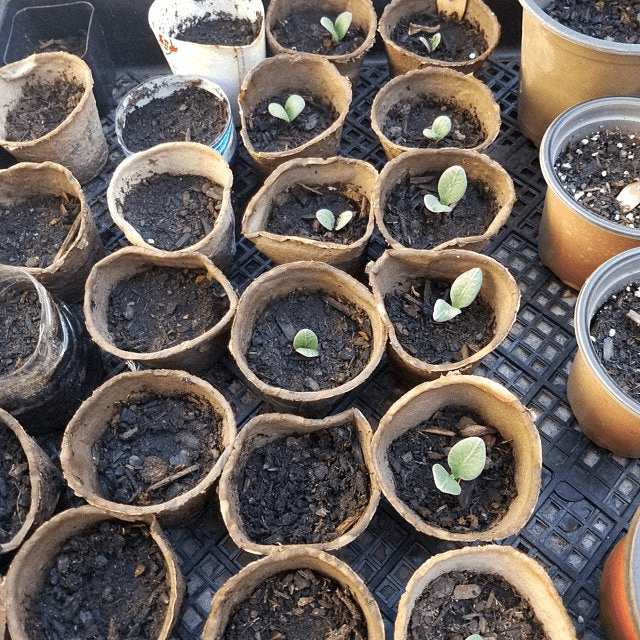
How to Plant Artichoke from Seeds
A heads up, planting artichokes from seeds is a bit tricky but not impossible. It is often a time-consuming process.
When planting artichoke, seedlings should be about 60 days old before being transferred to a garden. Since artichokes are tap-rooted plants, their roots grow deep, even as seedlings. It’s best to plant artichoke seeds must be planted in a deep container.
After eight to ten weeks, the seedlings will be ready to be transported to a garden. Before transferring the seedlings, be sure there’s no danger of frost in your area. By the time you transplant the seedlings, they will be approaching 10-inches in height.
Add compost to the garden soil before transferring the seedlings. Artichoke seedlings grow into large plants, so plant them four feet or more apart.
Artichokes require vernalization before so that you can accelerate flowering. Vernalization accelerates a plant’s flowering by cooling its roots or crowns to temperatures below 50 degrees.
Artichokes need 500 hours of vernalization. They should be planted before temperatures begin to rise in the spring but after the threat of frosting has passed.
Requirements to Grow Artichoke Plant
They aren’t high-maintenance plants, but there are a few things that are essential to planting artichokes and growing them successfully.
- Artichoke plants require a lot of room to grow
- They require a long growing season
- They require full sun. If you plant them too close together, a larger artichoke plant may prevent smaller plants from receiving adequate sunlight.
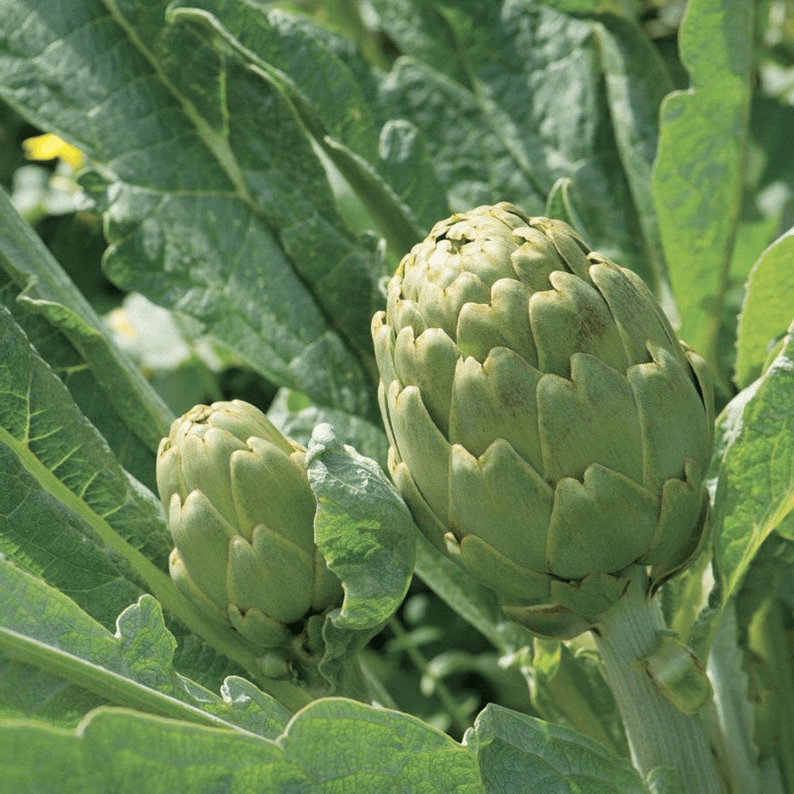
Caring for Artichoke Plants
In regions with harsh winters, prune them back to about 10-inches, cover them with a box or basket, and mulch using about 2 feet of leaves or straw to keep the soil at an even temperature. Taking these steps will protect the plants throughout the winter. Temperatures below 15 degrees may damage the plants.
Wait after the last frost date in the spring to remove the mulch. Keeping the soil well-drained yet fertile and slightly alkaline is ideal.
Good drainage keeps the roots from decaying, especially in regions where overwintering is a concern. The soil must also hold enough water for the roots to take it in during hot summers.
Artichoke Flower
If you’ve never grown an artichoke plant, you may not realize that artichokes are beautiful flowers. Artichoke bulbs should be picked before they bloom when the plant is grown as a vegetable destined for your lunch or dinner plate.
If you forget to pick your artichoke before it blooms, you’re in for a treat because the edible artichoke buds flower with striking 6-inch purple blooms.
You’ll know the artichoke is about to bloom when its leaves splay outwards. If you haven’t picked the buds by then, it’s too late.
Artichoke Season
Depending on the region, artichokes can be grown year-round, but their optimal growing season tends to be between March and May. When planted at home, artichokes can mature throughout the summer.
In hot coastal areas climates, artichokes grow during winter months, with their buds beginning to grow in May. Harvesting goes on until mid-June. In areas with cooler temperatures, artichokes spend the winter under the soil.
When the ground starts to warm in the spring, their new growth begins. You can transplant annual artichokes into your garden after the last frost.
FAQs
Do artichokes come back every year?
In growing zones 7 – 11, artichokes are perennials and can come back every year. They are annuals in colder regions and don’t come back every year.
How many artichokes do you get from one plant?
Artichoke plants typically produce between 6 – 10 artichokes per plant when they have enough space between plants.
How long does it take to grow an artichoke?
Artichokes take from 3 – 4 months to grow and produce artichokes. Depending on your hardiness zone, you may be able to plant artichoke for a spring harvest and again for a late summer or fall harvest.
How do you take care of an artichoke plant?
To care for an artichoke plant, consistent watering is important. The soil should be moist and well-draining. They are also heavy feeders and do well with Phosphorus and Potassium mixed into the soil before planting. You can add coffee grounds occasionally.
Growing Artichokes
Growing Cynara scolymus makes a great addition to any garden, whether you love to eat them or you want to decorate your landscape with lovely flowers. They are an attractive addition to home gardens, especially if you allow them to bloom.
Artichokes thrive in diverse regions and are most abundant in coastal areas such as their native Mediterranean and California.
Depending on your region’s climate, artichokes may be either perennial or annual plants. Keeping your artichoke plants healthy will ensure they produce dozens of chokes throughout their lifetime.
While artichokes have a long growing season with lots of sunshine and cool nights, they’re worth the effort to grow. You won’t be disappointed.
Winter Vegetables List to Plant for Year-Round Growing

